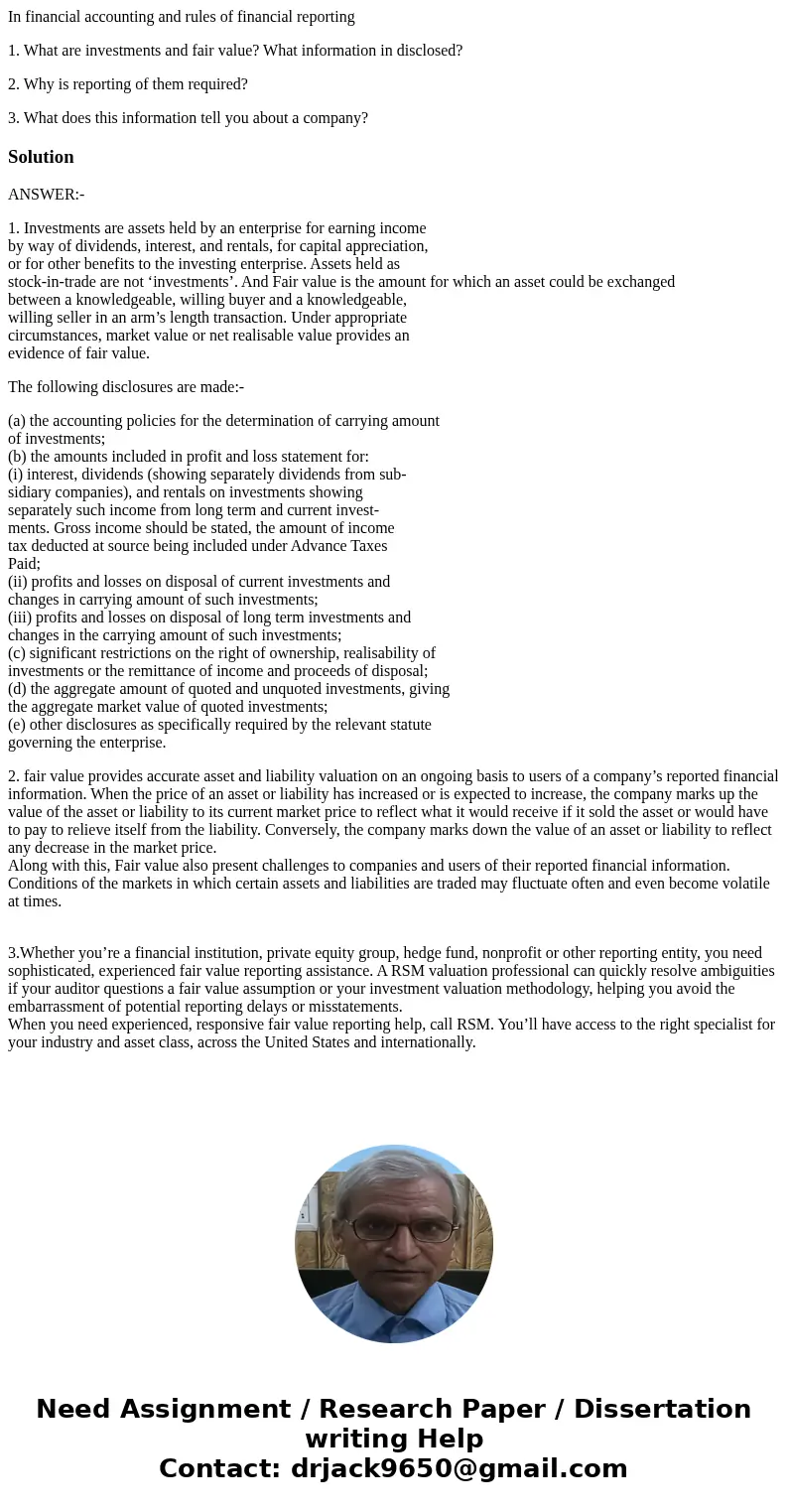In financial accounting and rules of financial reporting 1 W
In financial accounting and rules of financial reporting
1. What are investments and fair value? What information in disclosed?
2. Why is reporting of them required?
3. What does this information tell you about a company?
Solution
ANSWER:-
1. Investments are assets held by an enterprise for earning income
by way of dividends, interest, and rentals, for capital appreciation,
or for other benefits to the investing enterprise. Assets held as
stock-in-trade are not ‘investments’. And Fair value is the amount for which an asset could be exchanged
between a knowledgeable, willing buyer and a knowledgeable,
willing seller in an arm’s length transaction. Under appropriate
circumstances, market value or net realisable value provides an
evidence of fair value.
The following disclosures are made:-
(a) the accounting policies for the determination of carrying amount
of investments;
(b) the amounts included in profit and loss statement for:
(i) interest, dividends (showing separately dividends from sub-
sidiary companies), and rentals on investments showing
separately such income from long term and current invest-
ments. Gross income should be stated, the amount of income
tax deducted at source being included under Advance Taxes
Paid;
(ii) profits and losses on disposal of current investments and
changes in carrying amount of such investments;
(iii) profits and losses on disposal of long term investments and
changes in the carrying amount of such investments;
(c) significant restrictions on the right of ownership, realisability of
investments or the remittance of income and proceeds of disposal;
(d) the aggregate amount of quoted and unquoted investments, giving
the aggregate market value of quoted investments;
(e) other disclosures as specifically required by the relevant statute
governing the enterprise.
2. fair value provides accurate asset and liability valuation on an ongoing basis to users of a company’s reported financial information. When the price of an asset or liability has increased or is expected to increase, the company marks up the value of the asset or liability to its current market price to reflect what it would receive if it sold the asset or would have to pay to relieve itself from the liability. Conversely, the company marks down the value of an asset or liability to reflect any decrease in the market price.
Along with this, Fair value also present challenges to companies and users of their reported financial information. Conditions of the markets in which certain assets and liabilities are traded may fluctuate often and even become volatile at times.
3.Whether you’re a financial institution, private equity group, hedge fund, nonprofit or other reporting entity, you need sophisticated, experienced fair value reporting assistance. A RSM valuation professional can quickly resolve ambiguities if your auditor questions a fair value assumption or your investment valuation methodology, helping you avoid the embarrassment of potential reporting delays or misstatements.
When you need experienced, responsive fair value reporting help, call RSM. You’ll have access to the right specialist for your industry and asset class, across the United States and internationally.

 Homework Sourse
Homework Sourse